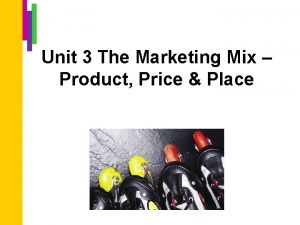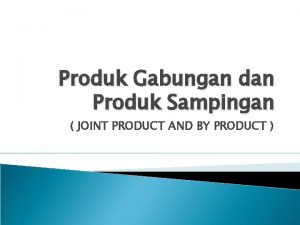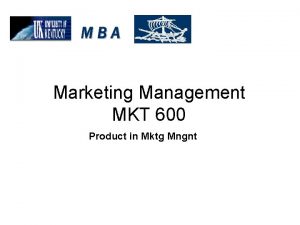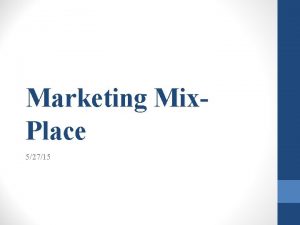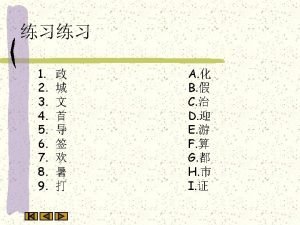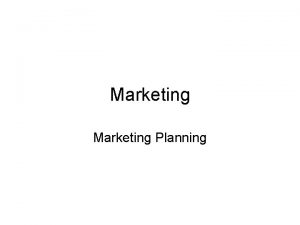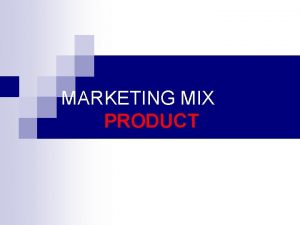Marketing 4 Ps PRODUCT Product Place 3 MARKETING












- Slides: 12

Marketing – 4 P’s PRODUCT

Product Place 3. MARKETING MIX Promotion Price

Product A product is a good/service that is developed to satisfy customer needs. This part of the marketing mix refers to the product design, function, USB, brand lifecycle. It also includes after sale service if required Design: this refers to function and form. Function: It must be designed to reliable carry out its function in a safe, convenient way and be easy to use. Form: It must also be augmented in terms of shape, size, colour and image

It also relates to: After sales service: this recognises that customer may need knowledge on the particular good/service after the time of sale. Example – Kia offer a 7 year warranty on their cars. USB/P: unique selling point or benefit This is what differentiates the product or service from its competitors. Businesses promote the USB to try and convince consumers to buy their product and increase sales. e. g Lidl and Aldi’s USB is price – offering goods at a cheaper price

Branding means: creating an identity for a product that clearly distinguishes it from the competition It is a vital element of the marketing mix as it: 1. Differentiates product: from its competitors, make sit easy to recognise and helps consumers to chose. 2. Develops customer loyalty: customer develop preferences for brands and can buy a certain brand automatically without comparing. This leads to customer loyalty, repeat purchases and increased sales.

3. Helps introduce new products: an established brand name supports a company introducing a new product. Customers will presume its to other products in their product portfolio standards. 4. Supports the price: established brands with a loyal customer base can charge higher prices for goods and services.

Own brands “Own label” brands are sold by the larger retailers with the retailers own name/own brand on them. They are goods that are usually sold at a lower price than leading brands. Retailers benefit from cheaper products which may increase sales by attracting additional customers and spending Consumers benefit from greater choice and lower prices Producers benefit from extra sales with a lower manufacturing and marketing costs


Packaging – function PIPI 1. Presentation: packaging must be attractive and eye catching to encourage customers to purchase it. Colours, logos, designs can be very influential in consumer buying in particular where products are sold alongside numerous competitors. 2. Identity: packaging can be in varying shapes and designs to help make the product stand out and give it a unique image and add to its identity. .

3. Protection: packaging must protect the contents during transit. The type of packaging needed is related to the nature of the product and must take into account perishability, ease of use, contamination, temperature, breakage etc. 4. Information: must contain information about the product to convince customers to purchase it. Many products legally require information to be displayed such as food products, weight, ingredients, origin, best before date, storage instructions. 5. Easy to use: some products USB/P may be the ease of use of its packaging.

Product life cycle- 5 stages sales MATURITY GROWTH SATURATION DECLINE LAUNCH Time

See resource on the product life cycle for more information on this
 Product place promotion price
Product place promotion price Place place value and period
Place place value and period What is disturbance that transfers energy
What is disturbance that transfers energy A disturbance that transfers energy from place to place
A disturbance that transfers energy from place to place Right product right place right time right price
Right product right place right time right price Elements of product mix
Elements of product mix Place utility marketing
Place utility marketing Product life cycle kotler
Product life cycle kotler Joint product adalah
Joint product adalah What is a firm
What is a firm Types of product line
Types of product line Core product augmented product
Core product augmented product Cross product outer product
Cross product outer product





